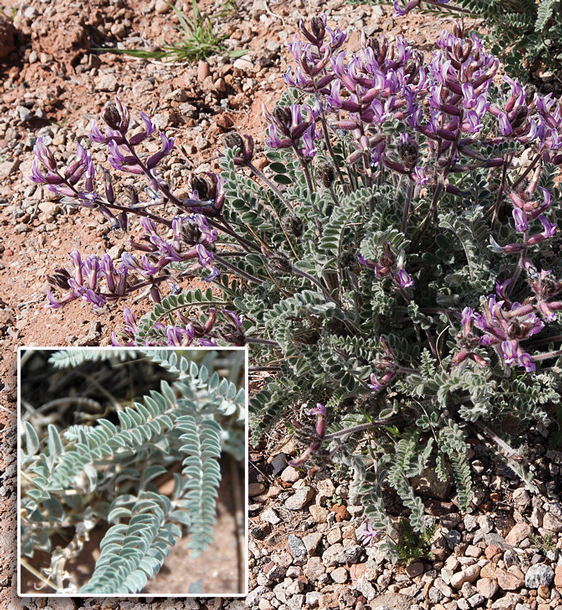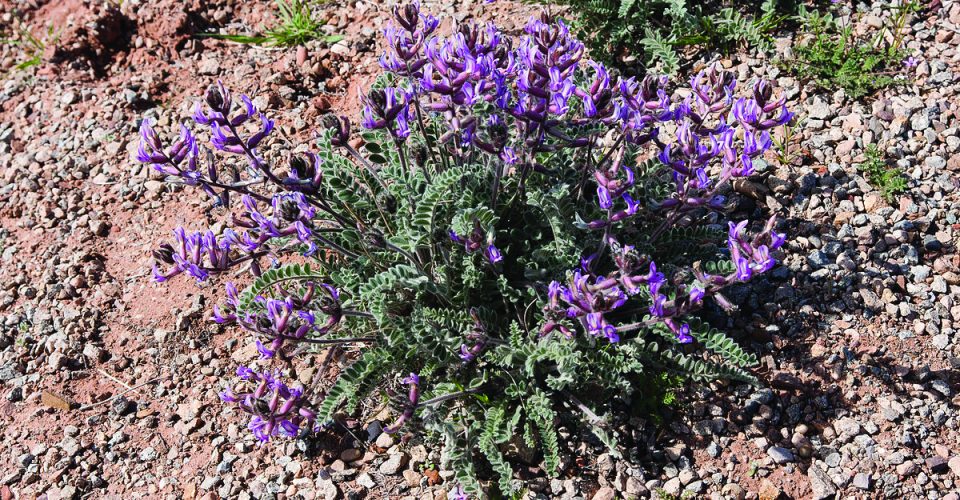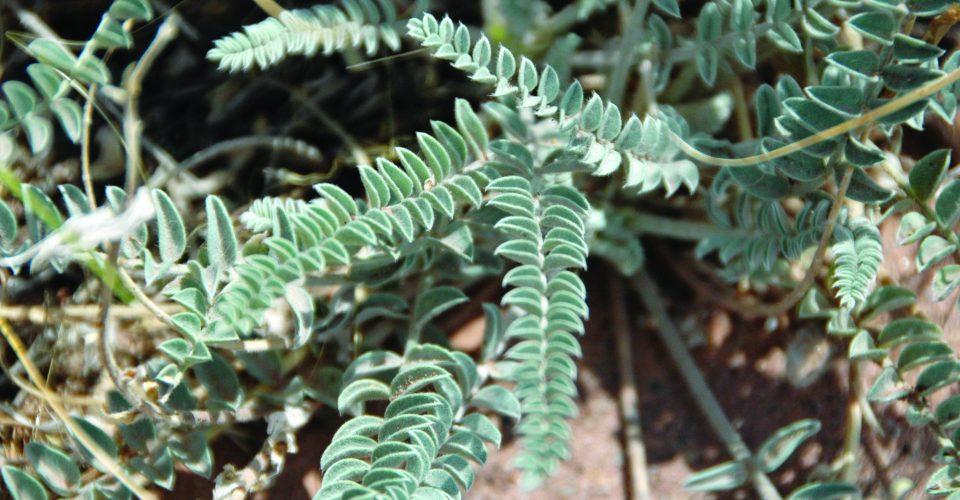Locoweed (Astragalus mollissimus Torr.)

The locoweed is a perennial in the legume family, most commonly found in the foothills and semiarid plains regions from Canada to Texas and west to California.
The plant gets its name from the Spanish word for crazy (loco), as a reference to how animals behave after ingesting it. All parts of the plant are toxic, at all stages of growth, including after it has matured and dried.
- Grows in tufts or clumps
- Has stout stems that have many oblong or oval leaflets covered with short, silky hairs
- Summer blossoms can be blue, purple, yellow or white, maturing into thick, moon-shaped seedpods
- Prolific seed producers
- Seeds may remain viable for up to 50 years
Horses, cattle, sheep, goats and wildlife will browse on locoweed, but usually only as a last resort if other forage is unavailable. It is especially harmful to horses.
Poisoning usually appears after 2 to 3 weeks of continuous grazing, and can result in neurologic damage, birth defects and spontaneous abortions. Among the signs of chronic poisoning are depression, dull eyes and coat, loss of muscular control and irregular gait, weakness, nervousness and an inability to eat or drink.
Ruminants need to consume from 200 to 350 percent of their weight over several months before they die. Horses only need to eat about 30 percent of their weight to produce symptoms and 75 percent can prove fatal. Horses rarely recover from chronic conditions.
If animals are showing signs of poisoning, move them to loco-free pastures and place them on a good diet. Cattle and sheep may recover if caught in time. Maintaining good range conditions and practicing a sound feed program can prevent against losses.
If you suspect your animals have been exposed to locoweed, contact your veterinarian for prompt treatment.
Locoweed can be managed with an application of herbicides.
Editor’s note: Kent Ferguson, retired rangeland management specialist from USDA Natural Resources Conservation Service (NRCS), is providing us with plant identification photo stories to help ranchers identify those forbs, forages and species growing in the pastures. Additional photos provided by USDA NRCS.
“Locoweed” is excerpted from the January 2017 issue of The Cattleman magazine.


